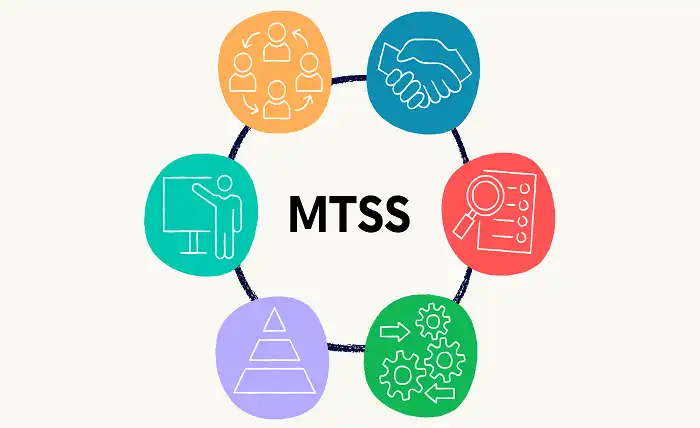How MTSS Can Help Struggling Students Succeed

Multi-tiered system of support (MTSS) is a framework that helps educators provide academic and behavioral strategies for students with various needs. MTSS grew out of the integration of two other intervention-based frameworks: Response to Intervention (RtI) and PBIS. MTSS is designed to help schools identify struggling students early and intervene quickly. It focuses on the “whole child.” That means it supports academic growth, but many other areas, too. These include behavior, social and emotional needs, and absenteeism.
Key Components of MTSS
Instead of the “waiting for failure” assessment model of pre-IDEA days, MTSS takes a proactive approach to identifying students with academic or behavioral needs. The key components of MTSS include:
- Universal screening of all students early in the school year
- Tiers of interventions that can be amplified in response to levels of need
- Ongoing data collection and continual assessment
- Schoolwide approach to expectations and supports
- Parent involvement
The integrated instruction model of MTSS uses collected data to assess student needs and provide them with interventions in appropriate tiers.
Three Tiers of Support
MTSS provides a method of early identification and intervention that can help struggling students catch up with their peers. As such, MTSS uses three tiers of support to assist all students at various levels. These three tiers include:
- Tier 1 – Universal or primary – Majority of students (75-90%) As the largest tier, and the foundation for the entire framework, Tier 1 encompasses the entire school with core instructions and basic interventions. This structure helps to build positive relationships between staff and students. It includes proactive classroom management strategies aimed at creating a supportive atmosphere. Students who do not respond to these interventions may move into Tier 2.
- Tier 2 – Secondary – Small groups of students (10-25%) Some students need a little extra assistance in meeting academic and behavioral goals, and it is in Tier 2 that these individuals receive that help. Often these interventions and supports are delivered in small group settings, such as reading groups. Check-In/Check-Out (CICO) interventions are often a part of Tier 2, as well.
- Tier 3 – Tertiary – Individual students (1-5%) Students who have not responded to Tier 1 or Tier 2 interventions may require more intensive and individualized support. Tier 3 interventions are designed to address the specific needs of these students, such as specialized instruction, behavior plans, or counseling.
Read more about OSPI: What is it and What does it do?
Benefits of MTSS
MTSS is more than just a framework for helping struggling students. It is also a way to improve the overall quality of education for all students. Some of the benefits of MTSS are:
- It promotes collaboration among teachers, administrators, specialists, and parents.
- It fosters a culture of data-driven decision making and continuous improvement.
- It reduces the overidentification of students for special education services.
- It increases student engagement and motivation.
- It enhances student outcomes and achievement.
Conclusion
MTSS is a comprehensive and proactive approach to meeting the diverse needs of all students. By providing tiered levels of support based on data and evidence, MTSS can help schools create a positive and supportive learning environment for everyone. If you want to learn more about how to implement MTSS in your school or district, you can check out some resources from Center on Multi-Tiered Systems of Support.




